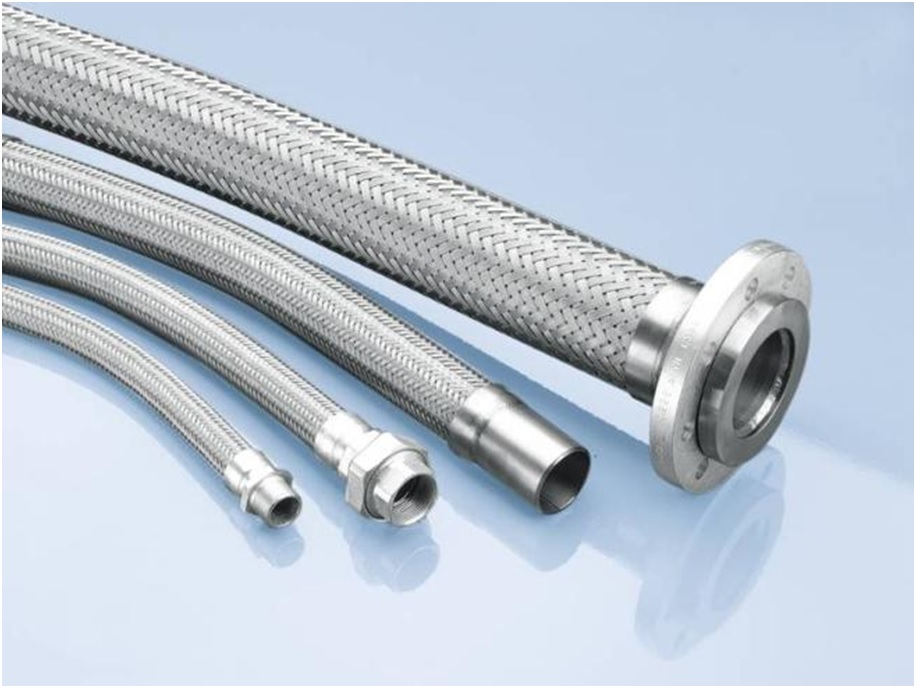What Are FLEX (Flexible) Stainless Steel Hoses? And What Are They Used For?

A FLEX (flexible) stainless hose is used to serve multiple purposes in various industries. It is used to construct miscellaneous items, like cookers, electricity meters, armatures, and decorative indoor gas installations.
Flex hoses are very popular in the marketplace because of the ease of installation it offers. The long durability, flexibility, and effective corrosion resistance properties make it a preferable choice in the construction of various systems.
While looking for the best flexible hose manufacturer in the marketplace, you need to consider certain features before you make your purchase. You need to ensure the material quality, corrugation section type, hose fittings, and other customizable features to suit your manufacturing needs and requirements.
To make an informed choice, you need to have a detailed understanding of the different properties of the Flex Stainless Steel Hoses. This article elaborates on the properties, uses, and applications of Flex Stainless Steel Hoses.
What Are FLEX (Flexible) Stainless Steel Hoses? How Is It Made?
Stainless flex hoses (SS flex hose) are manufactured from the stainless sheet strips of which the common types are 304/304L, 316/316L. This should comply with the TSE and EN ISO European standard. It has a melting point of an approx 1400-50 degrees Celsius (⁰C). This makes the stainless flex hoses highly resistant against any possible fire.
The coating of the stainless flex hose is not resistant to fire. The coating acts as a protective layer against any cleaning chemicals. Its nonporous nature helps to keep the breathing hazard under check.
A stainless flex hose needs to meet the standard protocol of the end material in which it will be put to use. Hence, it needs to pass multiple tests such as mechanical, chemical, and thermal to ensure safety and for better performance.
Manufacturing Stages Of Flex Hose
The stainless sheet strip is manufactured with precision. This is to ensure that the chemical content, surface quality, texture, width, and smoothness of the stainless flex hose is under check.
This stainless steel strip is welded on a production line using the most appropriate method, be it TIG, Laser, or Plasma. With this, the strip is turned into a pipe. Further manufacturing turns this pipe into a flexible hose on the same line, with the corrugation method. This is done via hydraulic or mechanical forming. After the hose is assembled, it needs to be tested for any potential leakages.
This hose can be dispatched immediately to become an end product like the solar flex hoses. However, it can also be delivered as a flexible hose assembly. For this, it needs to be subjected to several leakage tests. The flexible hose assembly needs to pass through at least one of the stations listed below.
- Welding the end pieces
- Stainless steel wire braiding
- Annealing (to bend easily and for better extensibility)
- Tube (insulation) coating with transparent and opaque PVC, polyolefin/polyethylene, pvc+polyethylene foam material
- Closing
Uses Of Stainless Flex Hoses
Stainless steel flexible hoses are used in a wide range of applications. It shows excellent heat resistance, vibration resistance, flexibility, and pressure resistance properties. It is mainly used to transport gaseous material like air, steam, natural gas, and liquids like water, oils. The design of the stainless steel flexible hose is tested thoroughly for any leakage. Hence, it can also safely transfer liquid chemicals and solutions.
The various tube casing (coating) types made on the stainless hose help it meet requirements of various industries. This coating is commonly known as “tube” in the marketplace. The coating is made as per the relevant standards of industries, or according to their specific demands. Here is a list of different types of coating and their intended uses.
- Transparent PVC: It prevents the hose from any damage because of its exposure to aggressive chemicals used in house cleaning. It is mainly used for 14800 Cooker Connection and Water Flex.
- Opaque PVC: This coating prevents it from aggressive chemicals. Opaque PVC is used for 15266 indoor gas flexes.
- Polyethylene /Polyolefin: This coating provides a resistant structure to the hose. It is used in products that require extra vacuumed coating.
- PVC + Polyurethane Foam: This coating remains durable under different weather conditions. It has a high heat insulation capacity and is used in solar system hoses.
- Polyurethane Foam: The hoses which are applied to the water insulation system, can use this coating.
To Conclude:
Stainless flex hoses have broad-ranging applications. It has an easy and fast installation system. Besides this, it is very flexible and used in a system where vibration and corrosion should be kept under check. Stainless Flex Hose serves the needs as mentioned above in various industries.